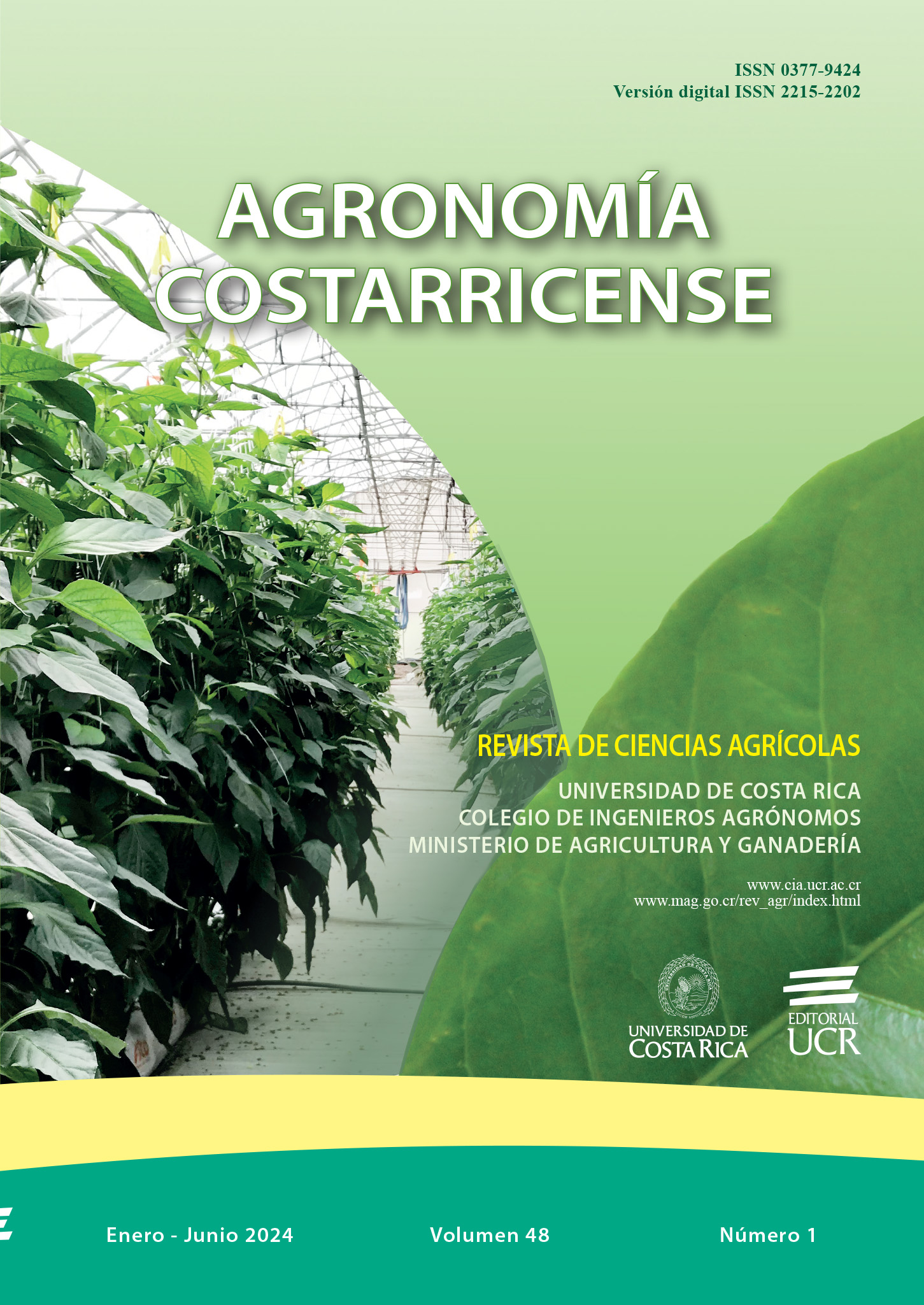Abstract
Introduction. Nitrogen (N) is an essential element for the photosynthesis process, and therefore, a determining factor in yield. The use of optical sensors to determine transmittance indices (SPAD, CCI), reflectance (NDVI) and fluorescence ( Fv.Fm-1) related to the state of foliar N, allows adequate management based on non-destructive “in situ” monitoring. Objective. To evaluate the effect of different fertigation management strategies on nitrogen and chlorophyll concentration in the leaf; and the relationship between i- N and Cl concentration in leaf, ii- N and Cl concentration in leaf with yield and iii- N and Cl concentration in leaf with SPAD, CCI, NDVI and Fv.Fm-1 indices. Materials and methods. Six treatments were evaluated in an unrestricted randomized design with a 2 x 3 factorial arrangement, which combined 2 irrigation strategies (E1: low volume and more frequent and E2: high volume and less frequent) and 3 levels of nutrition: low (NB), medium (NM) and high (NA). The direct measurements of N and Cl in the leaf were determined with the Kjeldahl method and by ethanol extraction, respectively. Results. Nutrition level affected N content, where the NM and NA treatments were similar, although higher than NB. The regression model showed little ability to estimate N and yield from the Cl content in the leaf. Estimation of Cl in the leaf from the CCI (R2: 0.71) and SPAD (R2: 0.75) indices were only promising in NB. To estimate foliar N, the regression with Fv.Fm-1 showed R2values of 0.89 in NB and 0.69 in NM; while for NDVI the R2 values were 0.61 in NB and 0.47 in NM. Conclusion. SPAD, CCI, NDVI and Fv.Fm-1 indices showed potential to estimate chlorophyll and N concentration in the leaf with low and medium nutrient inputs, and with limitations in treatments with high nutrient inputs.
Comments

This work is licensed under a Creative Commons Attribution-NonCommercial-NoDerivatives 4.0 International License.
Copyright (c) 2024 Agronomía Costarricense


